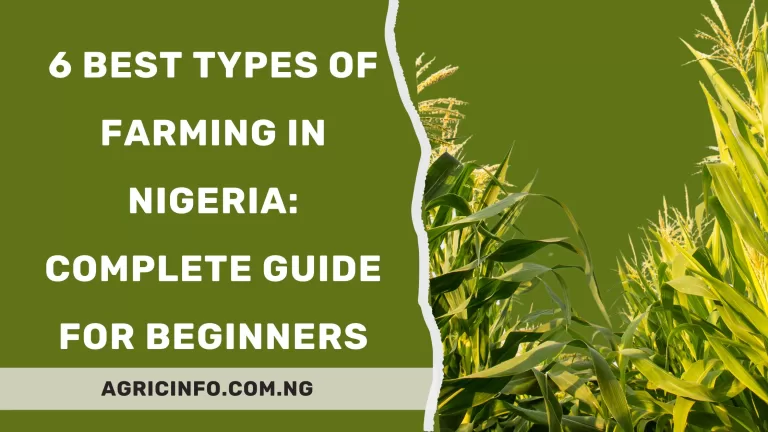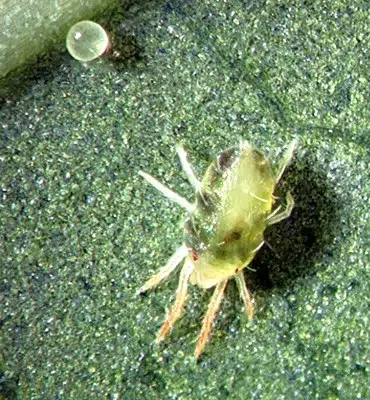How to Start Beans Farming in Nigeria 2024: Expert Guide
It’s good to know you need an expert guide on how to start beans farming in Nigeria. And I’m glad to inform you that you are at the right place.
Beans, also known as cowpeas, are one of the most popular and staple foods in Nigeria.
They are rich in protein, fiber, iron, and other nutrients. They are also affordable and easy to cook.
Beans are consumed by millions of Nigerians every day, either as a main dish or as an ingredient in soups, stews, salads, and snacks.
However, despite the high demand for beans in Nigeria, the local production is not enough to meet the needs of the population.
According to the Food and Agriculture Organization (FAO), Nigeria is the largest producer of beans in Africa, but also the largest importer of beans in the world.
Most of the beans consumed in Nigeria are imported from neighboring countries like Niger, Burkina Faso, and Cameroon.
This means that there is a huge gap in the market for beans farming in Nigeria.
Beans farming is a lucrative and sustainable business that can generate income for farmers, create employment opportunities, and improve food security in the country.
In this blog post, we will guide you on how to start beans farming in Nigeria, the benefits, the challenges, and the best practices to succeed in this venture.
Read How to Start Plantain Farming in Nigeria: Expert Guide
How Profitable is Beans Farming in Nigeria?

Beans farming is one of the most profitable agribusinesses in Nigeria.
According to a report by the International Institute of Tropical Agriculture (IITA), bean farming can yield an average of 2 tons per hectare, with a potential profit of N200,000 per hectare
This is based on the assumption that the cost of production is N100,000 per hectare and the market price of beans is N150 per kg.
However, the profitability of beans farming can vary depending on several factors, such as the variety of beans, the quality of the soil
As well as the availability of water, the use of fertilizer, pest and disease control, harvesting and storage methods, and the market demand and supply.
Therefore, it is important to do a proper feasibility study and market research before starting beans farming in Nigeria.
How Much Does it Cost to Start Beans Farming in Nigeria?
The cost of starting beans farming in Nigeria depends on the scale and location of the farm. However, some of the major expenses involved in beans farming are:
1. Land acquisition:
You need to get or rent suitable land for beans farming.
The land should be well-drained, fertile, and slightly acidic to neutral (pH 6-7). The land should also have adequate rainfall or irrigation facilities.
The cost of land varies from region to region, but it can range from N10,000 to N100,000 per hectare.
2. Land preparation:
You need to clear, plough, harrow, and ridge the land to make it ready for planting.
You can use manual labor or mechanized equipment for this process.
The cost of land preparation can range from N20,000 to N50,000 per hectare.
3. Seed purchase:
You need to buy quality seeds from certified dealers or seed companies.
However, you should avoid buying seeds from the open market, as they may be adulterated, damaged, or diseased.
You should also choose the right variety of beans that suit your soil and climate conditions.
Some of the popular varieties of beans in Nigeria are Ife Brown, Ife BPC, IT89KD-288, IT93K-452-1, and IT97K-499-35.
The cost of seed purchase can range from N5,000 to N10,000 per hectare.
4. Fertilizer application:
Beans are legumes that can fix nitrogen in the soil, so they do not require much fertilizer.
However, if the soil is poor or depleted, you may need to apply some organic or inorganic fertilizer to boost the growth and yield of the beans.
The recommended fertilizer for beans farming is NPK 15:15:15, which should be applied at the rate of 100 kg per hectare.
The cost of fertilizer application can range from N10,000 to N20,000 per hectare.
5. Pest and disease control:
Beans are sensitive to various pests and diseases, such as aphids, thrips, pod borers, bean beetles, nematodes, anthracnose, bacterial blight, mosaic virus, and root rot.
These can reduce the quality and quantity of the beans harvested.
Therefore, you need to apply appropriate pesticides and fungicides to protect your beans from these threats.
You should also practice crop rotation, intercropping, and weed control to prevent pest and disease infestation.
The cost of pest and disease control can range from N10,000 to N30,000 per hectare.
6. Harvesting and storage:
You need to harvest your beans when they are mature and dry. You can use manual labor or mechanized equipment for this process.
Also, you should sort, clean, and store your beans in a cool, dry, and well-ventilated place. You can use bags, baskets, silos, or warehouses for storage.
As well as protect your beans from rodents, insects, and moisture.
The cost of harvesting and storage can range from N10,000 to N40,000 per hectare.
Therefore, the total cost of starting beans farming in Nigeria can range from N65,000 to N280,000 per hectare, depending on the scale and location of the farm.
See Irish Potato Farming in Nigeria
How to Start Beans Farming in Nigeria
Having discussed the cost of starting beans farming in Nigeria, let’s dive into the step-by-step process of how to start beans farming in Nigeria
To start beans farming in Nigeria, you need to follow these steps:
1. Choose a suitable land:
As mentioned earlier, you need to get or rent suitable land for beans farming.
The land should be well-drained, fertile, and slightly acidic to neutral (pH 6-7).
It should also have adequate rainfall or irrigation facilities.
However, You should also avoid planting beans on the same land for more than two consecutive seasons, as this can deplete the soil nutrients and increase the risk of pest and disease infestation.
Also, practice crop rotation with cereals, tubers, or vegetables to maintain soil fertility and health.
2. Prepare the land:
The next step in how to start beans farming in Nigeria is to clear, plough, harrow, and ridge the land to make it ready for planting.
You can use manual labor or mechanized equipment for this process.
You should also remove any weeds, stones, or debris from the land. You should prepare the land at least two weeks before planting.
3. Plant the seeds:
Buy quality seeds from certified dealers or seed companies.
You should avoid buying seeds from the open market, as they may be adulterated, damaged, or diseased.
You should also choose the right variety of beans that suit your soil and climate conditions.
Some of the popular varieties of beans in Nigeria are Ife Brown, Ife BPC, IT89KD-288, IT93K-452-1, and IT97K-499-35.
Plant the seeds at a depth of 2-3 cm and a spacing of 60-75 cm between rows and 20-25 cm between plants.
Ensure to plant the seeds at the onset of the rainy season, usually between April and June.
4. Apply fertilizer:
Having planted the seeds, the next step on how to start beans farming in Nigeria.
Beans are legumes that can fix nitrogen in the soil, so they do not require much fertilizer. However, if the soil is poor or depleted, you may need to apply some organic or inorganic fertilizer to boost the growth and yield of the beans.
The recommended fertilizer for bean farming is NPK 15:15:15, which should be applied at the rate of 100 kg per hectare.
You should apply the fertilizer in two splits, one at planting and one at flowering.
5. Control pests and diseases:
This is an important process in beans in farming in Nigeria.
Beans are sensitive to various pests and diseases, such as aphids, thrips, pod borers, bean beetles, nematodes, anthracnose, bacterial blight, mosaic virus, and root rot.
These can reduce the quality and quantity of the bean harvest.
Therefore, you need to apply appropriate pesticides and fungicides to protect your beans from these threats.
You should also practice crop rotation, intercropping, and weed control to prevent pest and disease infestation.
You should monitor your beans regularly and apply the necessary measures as soon as you notice any signs of pest or disease attack.
6. Harvest and store your beans:
The last step in how to start beans farming in Nigeria is to harvest your beans when they are mature and dry.
You can use manual labor or mechanized equipment for this process. You should also sort, clean, and store your beans in a cool, dry, and well-ventilated place.
Use bags, baskets, silos, or warehouses for storage. However, protect your beans from rodents, insects, and moisture.
You should harvest your beans between 90 and 120 days after planting, depending on the variety.
You may also like Sweet Potato Farming in Nigeria 2024: Best Guide
Conclusion on How to Start Beans Farming in Nigeria
Beans farming in Nigeria is a profitable and sustainable business that can generate income for farmers, create employment opportunities, and improve food security in the country. However, bean farming requires proper planning, management, and marketing to succeed.
Therefore, you should do a proper feasibility study and market research before starting beans farming in Nigeria.
You should also follow the guidelines outlined in this How to Start Beans Farming in Nigeria guide to ensure a high-quality and profitable beans harvest.
We hope you find it helpful.
Don’t forget to share.
FAQs
What is the best time to plant beans in Nigeria?
The best time to plant beans in Nigeria is at the onset of the rainy season, usually between April and June.
This is because beans need adequate moisture and temperature to germinate and grow well.
How much water do beans need?
Beans need about 500-600 mm of water per season.
However, beans do not tolerate water logging or drought.
Therefore, you should ensure that the soil is well-drained and irrigated as needed.
How long does it take for beans to mature?
Beans take between 90 and 120 days to mature, depending on the variety.
You can tell when the beans are ready for harvest when the pods are dry and the seeds rattle inside.








